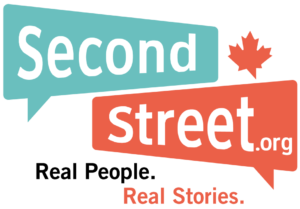Share this:
INFO: How You Can Support Ukraine

The images coming out of Ukraine over the past month have been horrific – kids huddled together in bomb shelters, hospitals and apartments getting shelled by Russia’s military and Putin’s attack on a nuclear power plant to name a few.
Understandably, Canadians want to help.
Our Executive Secretary, Melanie Harvie, received some correspondence recently from a contact in Ukraine. During a work trip to Ukraine a decade ago, Melanie met Oksana Tkachuk (from Kyiv, Ukraine) at the World Taxpayers Conference. A few days ago, Oksana wrote to Melanie to ask if she would help spread the word about one initiative that is supporting people and families in Ukraine:
————
Dear Melanie,
My name is Oksana Tkachuk and I hope you remember me. We got acquainted with you during the World Taxpayers Conference that was held in Ukraine in 2012 .
I was among the organizers of this event and hosted you in our peaceful city of Kyiv at that time together with the Taxpayers Association of Ukraine. I do not work with the Taxpayers Association now but address you as a Ukrainian.
Today, Ukraine suffers from Russian invasion and every Ukrainian struggles for peace, freedom and truth. We use every opportunity to support our army and people who bravely defend our motherland. That is why I kindly address you to support our country at this crucial period.
After the Russian invasion into Ukraine in February 2022, we have been receiving a lot of messages connected with the following questions: “How can I help Ukraine?”, “Where can I send humanitarian aid?”, “What kind of help is relevant right now?”.
Please find information about the platform that aggregates official resources for providing humanitarian and other aid to Ukraine. I would be also thankful if you could spread this info among your partner companies or organizations in Canada and the world.
Ukraine Helpers ― official platform for rapid and effective humanitarian help for Ukraine.
On this website you can find information about:
– relevant list of necessary aid according to the requests from official Ukrainian organisations;
– catalogue of addresses of warehouses in the different countries of the world which are capable of storing humanitarian aid. You can find them on a map, specially designed for this task;
– catalogue of verified charitable foundations and organisations in Ukraine and other countries through which you are able to send financial aid.
The necessary information is available on official pages of Ukraine Helpers:
Official website: https://ukraine-helpers.com/
Instagram: https://instagram.com/ukraine_helpers_?utm_medium=copy_link
Facebook: https://www.facebook.com/ukraine.helpers/
Twitter: https://twitter.com/helpers_ukraine?s=21
Contact phone numbers:
+380676816883
+380504829214
+380632496636
This platform was developed with assistance of the Ministry of Foreign Affairs of Ukraine.
Join us and spread information about Ukraine Helpers as much as possible.
Help Ukraine today!
Please, be sure I will be happy to meet and assist you once in a peaceful beautiful Kyiv!
Thank you!
Sincerely yours,
Oksana Tkachuk
Ukraine-Helpers Initiative
You can help us continue to research and tell stories about this issue by making a donation or sharing this content with your friends. Be sure to sign up for our updates too!


